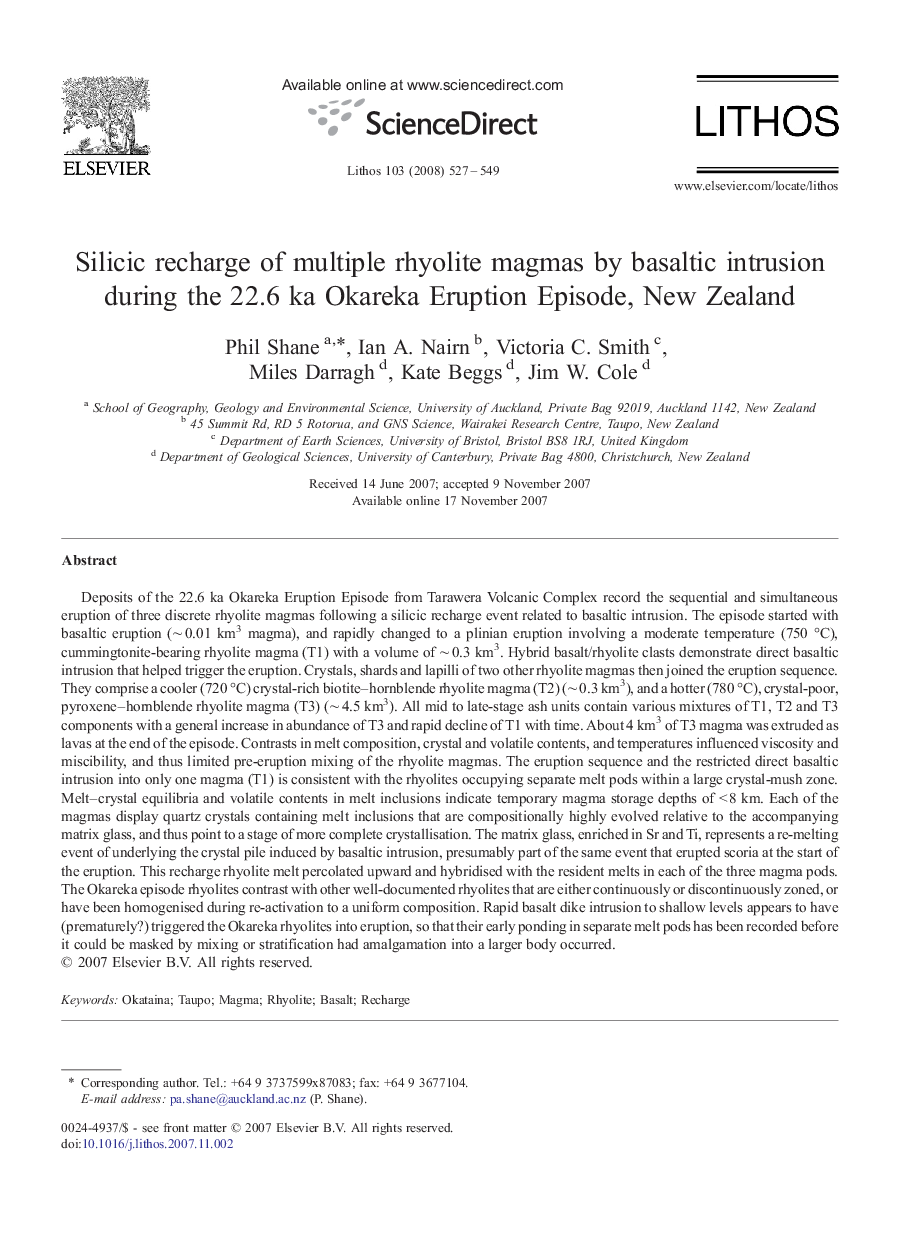| کد مقاله | کد نشریه | سال انتشار | مقاله انگلیسی | نسخه تمام متن |
|---|---|---|---|---|
| 4717467 | 1638755 | 2008 | 23 صفحه PDF | دانلود رایگان |

Deposits of the 22.6 ka Okareka Eruption Episode from Tarawera Volcanic Complex record the sequential and simultaneous eruption of three discrete rhyolite magmas following a silicic recharge event related to basaltic intrusion. The episode started with basaltic eruption (∼ 0.01 km3 magma), and rapidly changed to a plinian eruption involving a moderate temperature (750 °C), cummingtonite-bearing rhyolite magma (T1) with a volume of ∼ 0.3 km3. Hybrid basalt/rhyolite clasts demonstrate direct basaltic intrusion that helped trigger the eruption. Crystals, shards and lapilli of two other rhyolite magmas then joined the eruption sequence. They comprise a cooler (720 °C) crystal-rich biotite–hornblende rhyolite magma (T2) (∼ 0.3 km3), and a hotter (780 °C), crystal-poor, pyroxene–hornblende rhyolite magma (T3) (∼ 4.5 km3). All mid to late-stage ash units contain various mixtures of T1, T2 and T3 components with a general increase in abundance of T3 and rapid decline of T1 with time. About 4 km3 of T3 magma was extruded as lavas at the end of the episode. Contrasts in melt composition, crystal and volatile contents, and temperatures influenced viscosity and miscibility, and thus limited pre-eruption mixing of the rhyolite magmas. The eruption sequence and the restricted direct basaltic intrusion into only one magma (T1) is consistent with the rhyolites occupying separate melt pods within a large crystal-mush zone. Melt–crystal equilibria and volatile contents in melt inclusions indicate temporary magma storage depths of < 8 km. Each of the magmas display quartz crystals containing melt inclusions that are compositionally highly evolved relative to the accompanying matrix glass, and thus point to a stage of more complete crystallisation. The matrix glass, enriched in Sr and Ti, represents a re-melting event of underlying the crystal pile induced by basaltic intrusion, presumably part of the same event that erupted scoria at the start of the eruption. This recharge rhyolite melt percolated upward and hybridised with the resident melts in each of the three magma pods. The Okareka episode rhyolites contrast with other well-documented rhyolites that are either continuously or discontinuously zoned, or have been homogenised during re-activation to a uniform composition. Rapid basalt dike intrusion to shallow levels appears to have (prematurely?) triggered the Okareka rhyolites into eruption, so that their early ponding in separate melt pods has been recorded before it could be masked by mixing or stratification had amalgamation into a larger body occurred.
Journal: Lithos - Volume 103, Issues 3–4, July 2008, Pages 527–549